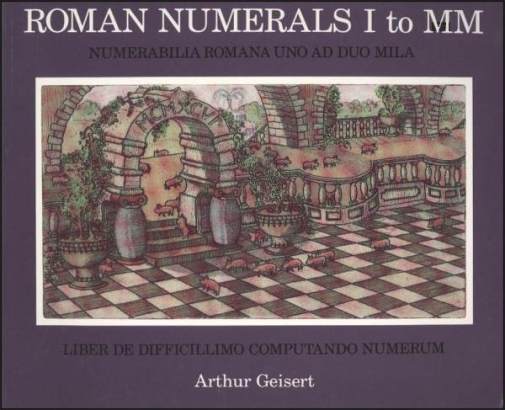We use cookies to make your experience better. To comply with the new e-Privacy directive, we need to ask for your consent to set the cookies. Learn more.
Roman Numerals I to MM
Introduce children to Roman numerals with this fun counting book. Each numeral is introduced, and then children count the pigs in the accompanying picture to find out the value of the numeral. This continues for 100, 200, 300, and even 1,000 - if you care to count all those pigs (I confess, I had to just out of curiosity, although I didn't count the M page, as I couldn't tell if it held just one thousand pigs, or even MM or MMM pigs - even I'm not THAT curious). The text gives tips on how to read numerals, and when to add and subtract them to get the right number. At the end of the book, several pages offer a number (in Roman numerals, of course) of objects in a picture. Children can find and count these objects for additional practice. A very cute way to learn the Roman numerals. - Melissa
Oh how I wish these books had been available when my children were younger! Every summer we would join our local library reading program, and although most of the time allowed my children to select their own reading materials, I often would slip in an educational book just to keep their minds focused. Frequently, these books would be math-oriented since I really wanted to keep their math skills sharp. Using children's books to teach math skills has always been fun for my family, and these books would have served to bring more fun to our math practice.
The vision of the author of this series was simply to allow books to lead the way from Storyland to Mathland, allowing our children to learn at a young age that math can and should be fun! With this vision, she created each Funbook to correspond to sixteen children's books. These books are easily found in libraries, however, they may also be purchased inexpensively (see resource list for each book below).
Each Funbook contains black and white activity pages, brightly colored cardstock manipulatives, and an extended reading list. Funbook A contains teacher's notes for each of the children's book read, activity page answers, and stickers to complete some of the activities. A few activities will also require other items that are easily found around your home such as coins and dice. Teacher Guides are available separately for Funbook 1 and 2. The Teacher Guides provide ideas to use the Let's Read Math Funbooks in a variety of settings, a summary of each book to be read, instructions for each student page, reduced student pages with answers, and a suggested book list using the same math themes as found in the primary sixteen books. Although it is possible to use these Funbooks without the Teacher Guides, the additional support materials found in them are worth the investment to organize and instruct you on using the Funbooks most effectively.
So, what math topics are covered? Each book covers a large variety of math themes and incorporates practical math (money, seasons, time), geometry, classifying, and algebraic formulas. According to the author, Funbook 1 and Funbook 2 are non-sequential and can be completed in either order. This series is loosely linked to state standards but would not independently meet state standards. Please note: Funbook A copyright grants permission for copies to be made for students in a classroom or out of a school setting. The rest of the series is not reproducible. Pb. ~ Deanne
| Product Format: | Softcover Book |
|---|---|
| Brand: | Houghton Mifflin |
| Author: | Arthur Geisert |
| Grades: | K-5 |
| ISBN: | 9780618153213 |
| Length in Inches: | 9.874 |
| Width in Inches: | 8.062 |
| Height in Inches: | 0.168 |
| Weight in Pounds: | 0.28 |

